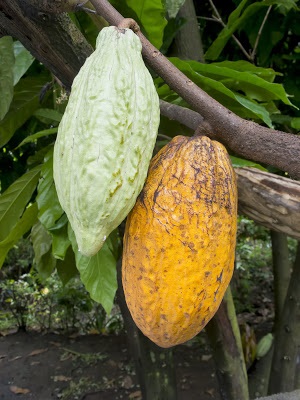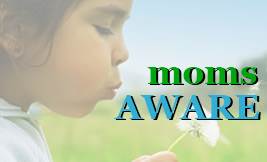What About Chocolate?

Are you feeling guilty about your love of chocolate? Wondering if you need to forsake your habit? Perhaps there's a way to "have your cake and eat it too"—with raw cacao!
Where does chocolate come from?
Chocolate is derived from the Theobrama cacao tree. Literally "food of the gods," the Theobrama tree grows exclusively in locations 20 degrees north or south of the equator, making it a key trade commodity. There are 1.5 million farms in West Africa alone!
This makes the issue of fair trade relevant when it comes to chocolate. How are the growers treated? Are they compensated fairly? (For a list of chocolate companies with fair trade certification, see Fair Trade USA.)
 The cacao tree is an evergreen tree with fruits and flowers growing directly from its trunk. The fruit is called a pod, which ranges from 4–12 inches in length. Each pod contains 20–60 reddish-brown cacao beans. Farmers break open the pod, extract the beans, and prepare them for fermentation.
The cacao tree is an evergreen tree with fruits and flowers growing directly from its trunk. The fruit is called a pod, which ranges from 4–12 inches in length. Each pod contains 20–60 reddish-brown cacao beans. Farmers break open the pod, extract the beans, and prepare them for fermentation.
The fermentation process is where the rich flavors begin to develop, and the beans turn from light yellow to rich brown. The beans are placed into large wooden boxes, covered with banana leaves, and left to ferment for up to a week. Heat is generated within the beans, up to 112 degrees, which breaks down many of the bitter compounds. The sugars are converted into lactic and acetic acids—our friends found in yogurt and vinegar, respectively.
Once the fermentation process is complete, the cacao beans are sun-dried for a week or more, then packaged into sacks where they can be shipped worldwide.
What happens to the cacao beans once they reach the factory?
The beans are refined into nibs through a process of winnowing and roasting. (Once the cacao is processed, the resulting product is termed cocoa.) The nibs are then heated and melted into chocolate liquor. Sugar and milk are added for flavor, and then the chocolate is delivered in tanks to molding factories, where it is packaged and prepared for distribution.
Cocoa powder can be made from the roasted beans by taking the fat out of the nibs. A hydraulic press is used, which generates quite a bit of heat. This means some of the rich enzymes and nutrients are lost in the process. Dutch cocoa powder adds the extra step of soaking the beans in potassium carbonate prior to processing, making it less optimal in terms of nutrition.
Raw cacao powder retains the term "cacao" because it is virtually unprocessed. The cacao nibs are ground into a paste or liquor, then separated from the cacao butter using a cold-processed technique.
As with many foods, cacao beans retain most of their nutrients when consumed in raw form.
What are these nutrients?
There are 300 chemically distinct compounds in the cacao bean, making it one of the most complex of all foods. Compounds include:
- Iron
- Zinc
- Copper
- Calcium
- Magnesium
- Sulfur
- Phenylethylamine (PEA) *
- Anandamide **
* PEA is an adrenal-related chemical that plays a role in feeling focused and alert.
** Anandamide is the "bliss" chemical known to create feelings of excitement.
What about carob?
Carob is derived from the pod of the carob tree, a Mediterranean shrub. Carob contains 40–46 percent natural sugar as opposed to cacao powder's 4–5 percent. It has less fat and tastes much sweeter.
Where can I find raw cacao products?
Check your health food store or search online. Vitacost offers a wide variety of cacao products.
Is there a downside to cacao?
There are at least two chemicals of concern when it comes to the consumption of chocolate in any form:
- Oxalic acid, which acts as a calcium inhibitor.
- Theobromine, which acts as a stimulant.
Theobromine has about 1/4 the stimulating power of caffeine, but can be overstimulating to some individuals. It can also lead to hyperactivity followed by lethargy, much like the effects of caffeine.
Dogs lack the digestive enzymes to metabolize theobromine, which makes it important to keep dogs away from chocolate.
Concluding thoughts:
- Consume cacao that is raw, or as close to raw as possible.
- Be aware of fair trade practices and purchase from a company that supports local growers.
- Know your body's response to chocolate. Is it too stimulating for you?
- Keep the sugar out. There are many natural, healthy ways to consume cacao that don't require the addition of refined sweeteners. Many find their taste buds acclimate quite well to raw cacao.
Are you ready to try making your own chocolate treat? Check out these Cacao Almond Balls from momsAWARE's Rejuvenating Recipes, or choose from the many recipes found in this Ultimate Gluten-Free, Dairy-Free Chocolate Dessert Roundup.
Like most foods, the closer it is to its natural form, the better—and that includes chocolate.

